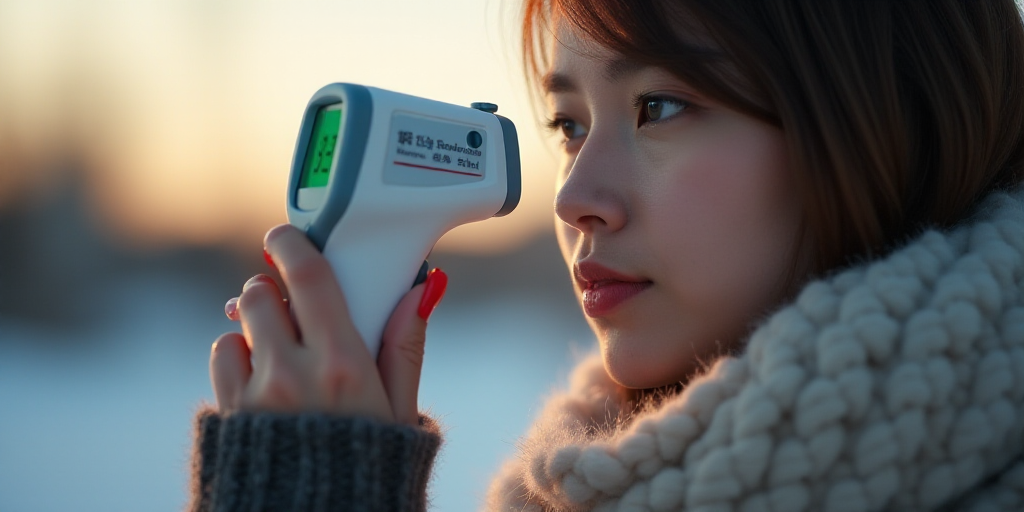What is Allergic Rhinitis?
Allergic rhinitis, also known as hay fever, is a common respiratory condition affecting over 40% of the Mexican population, according to Dr. Rodolfo Muriel Vizcaíno, a pediatric allergist and immunologist at Centro Médico ABC. This condition is one of the most prevalent respiratory diseases worldwide.
Allergic Rhinitis vs. Non-Allergic Rhinitis
Rhinitis refers to inflammation of the nasal mucosa, causing symptoms like sneezing, a blocked nose, runny nose, and itching. However, not all rhinitis has the same origin.
- Irritant Rhinitis: Caused by exposure to irritants such as strong perfumes, smoke, or environmental pollutants.
- Vasomotor Rhinitis: Related to dysfunction of blood vessels in the nose, symptoms occur with abrupt temperature changes, exposure to cold air, strong odors, or hormonal changes.
- Infectious Rhinitis: Associated mainly with viral infections like the common cold.
Allergic rhinitis, on the other hand, occurs when the immune system overreacts to environmental allergens. It can be classified based on duration and intensity:
- By Duration:
- Intermittent Allergic Rhinitis: Symptoms present for less than four days a week or fewer than four consecutive weeks.
- Persistent Allergic Rhinitis: Symptoms present for more than four days a week and more than four consecutive weeks.
- By Intensity:
- Mild: Symptoms do not interfere with sleep or daily activities.
- Moderate to Severe: Symptoms affect sleep or work/school performance, impacting quality of life.
Recognizing Allergic Rhinitis Symptoms
Allergic rhinitis often starts suddenly after exposure to an allergen, as per Dr. Muriel. Common symptoms include:
- Chronic sneezing: Repetitive episodes of sneezing, often triggered by exposure to allergens like pollen, dust, or animal dander.
- Nasal congestion: Feeling of obstruction in the nose due to inflamed nasal tissues, making breathing through the nose difficult.
- Clear nasal discharge: Constant dripping of watery mucus from the nose, without signs of infection.
- Itching in the nose, throat, and/or eyes: Uncomfortable itching sensation, a hallmark of allergic reactions.
- Red, watery, or itchy eyes: Inflammation of the conjunctiva caused by allergens, leading to redness, excessive tears, and a burning or itching sensation.
- Fatigue or mild headache: General feeling of fatigue and mild headaches, often due to poor sleep from congestion or effort to breathe properly.
Biologically, the body perceives harmless substances (allergen) as dangerous, activating an immune response mediated by immune cells and Immunoglobulin E (IgE), resulting in the release of histamine and other substances that maintain inflammation.
Causes of Allergic Rhinitis
Allergic rhinitis can occur at any age but is most common in childhood (ages four to eight) and young adulthood (25 to 35 years). Genetic predisposition is a significant factor, though not directly inherited; there’s a tendency to develop allergic diseases known as atopy. If one or both parents are allergic, children have a higher likelihood of developing allergies. Environmental factors like pollution, lack of nature exposure, processed food excess, and certain childhood infections also play crucial roles.
Diagnosis and Treatment of Allergic Rhinitis
If you suspect allergic rhinitis, consult a doctor—preferably an allergist or pediatric allergist—though general practitioners, pediatricians, and internists can also diagnose and manage mild cases. Diagnosis involves a detailed clinical history, physical examination, and often allergy skin tests to identify patient sensitivities.
Treatment options include:
- Avoiding known allergens.
- Using antihistamines to reduce the allergic response.
- Using nasal corticosteroids to decrease inflammation.
- Short-term decongestants, not to be used for more than three consecutive days.
- Specific immunotherapy, recommended for moderate to severe cases, involving allergy shots.
Medical supervision is crucial to identify any changes in symptoms, which may require adjustments in treatment. Beyond medical support, practical recommendations can significantly reduce allergen exposure:
- Dusting with damp cloths instead of dry ones to prevent allergens from airborne.
- Adequately ventilating the home.
- Using air purifiers and dehumidifiers daily.
- Weekly bathing of pets and keeping them out of bedrooms.
- Avoiding outdoor activities during high pollen periods, wearing sunglasses, showering and changing clothes after outdoor activities, and avoiding air-drying laundry.
While allergic rhinitis isn’t curable, proper diagnosis and treatment allow many individuals to live nearly symptom-free, as concluded by Dr. Muriel.
For specialized diagnosis and treatment of allergic rhinitis, as well as associated conditions, visit the Medicine Internal and Pediatrics areas at Centro Médico.






